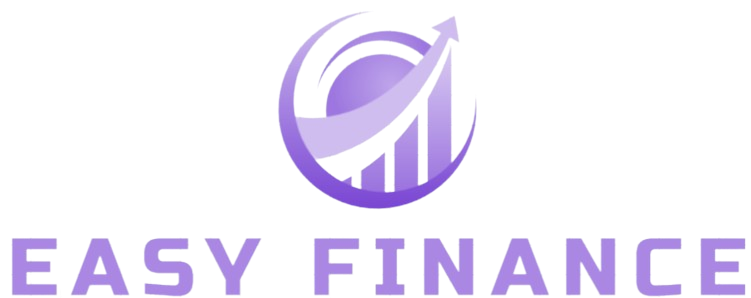Are you dreaming of owning your own home? It’s an exciting journey, but securing a mortgage loan can seem daunting. Don’t worry! We’re here to guide you through the steps to make your dream a reality. Understanding the process and being well-prepared can make a huge difference. Let’s dive into the steps you need to take to secure a mortgage loan for your dream home.
Mortgage Loans
A mortgage loan is a specific type of loan that is used to purchase real estate. The unique aspect of a mortgage loan is that the property you are buying serves as collateral for the loan. This means that if you fail to make your loan payments, the lender has the right to take ownership of the property through a process called foreclosure. This collateral aspect makes mortgage loans less risky for lenders compared to unsecured loans, which often results in lower interest rates for borrowers.
The process of obtaining a mortgage loan involves several steps, including applying for the loan, providing necessary documentation, and going through an underwriting process where the lender evaluates your financial situation. Understanding the terms and conditions of your mortgage loan is crucial, as it will affect your financial situation for many years. It’s important to choose the right type of mortgage loan that fits your financial goals and capabilities.
Types of Mortgage Loans
Fixed-Rate Mortgages
Fixed-rate mortgages offer a consistent interest rate for the life of the loan, which makes your monthly payments predictable. This type of mortgage is ideal for borrowers who plan to stay in their home for a long period, as it provides stability and makes budgeting easier. The interest rate on a fixed-rate mortgage remains the same throughout the term of the loan, regardless of changes in the market interest rates. This can be beneficial during periods of rising interest rates.
Key points about fixed-rate mortgages include:
- Predictable payments: Monthly principal and interest payments remain the same throughout the loan term.
- Protection against rising interest rates: Your rate is locked in, so you are not affected by market fluctuations.
- Simplicity: Easier to understand and manage compared to other types of loans.
Adjustable-Rate Mortgages
Adjustable-rate mortgages (ARMs) have interest rates that can change periodically, usually in relation to an index. This means your monthly payments can vary over time. ARMs typically start with a lower interest rate compared to fixed-rate mortgages, which can make them appealing to borrowers who plan to sell or refinance before the adjustment period begins. However, because the interest rate can increase, there’s a risk that your payments could become unaffordable.
Key points about adjustable-rate mortgages include:
- Initial lower rates: Often lower than fixed-rate mortgages initially.
- Rate adjustments: Interest rates can increase or decrease at predetermined intervals.
- Potential for higher payments: Monthly payments can increase if interest rates rise.
Government-Backed Loans
Government-backed loans, such as FHA, VA, and USDA loans, are designed to help specific groups of people, such as first-time homebuyers, veterans, and rural residents. These loans often have more flexible qualification requirements and may offer lower down payments compared to conventional loans. For example, FHA loans are popular among first-time homebuyers due to their lower credit score requirements and down payment options.
Key points about government-backed loans include:
- FHA Loans: Lower credit score requirements and down payments, ideal for first-time homebuyers.
- VA Loans: Available to veterans and active-duty military members, often with no down payment required.
- USDA Loans: Designed for rural property buyers, with no down payment and lower interest rates.
Assessing Your Financial Situation
Evaluating Your Credit Score
Your credit score plays a crucial role in securing a mortgage. Lenders use your credit score to assess your creditworthiness and determine the interest rate and terms they will offer you. A higher credit score typically results in better interest rates and loan terms, which can save you thousands of dollars over the life of the loan. It’s important to check your credit report for any errors or issues and address them before applying for a mortgage. Improving your credit score can involve paying down debt, making timely payments, and avoiding new credit inquiries.
Key steps to evaluate and improve your credit score:
- Check your credit report: Obtain a free copy of your credit report from major credit bureaus.
- Address errors: Dispute any inaccuracies on your credit report.
- Pay down debt: Reduce your outstanding debt to improve your debt-to-credit ratio.
- Make timely payments: Consistently pay your bills on time to build a positive credit history.
Determining Your Budget
Knowing how much you can afford is essential when securing a mortgage. Determining your budget involves assessing your income, expenses, and savings to ensure you can comfortably afford your monthly mortgage payments. Mortgage calculators can be useful tools to estimate your monthly payments based on different loan amounts, interest rates, and terms. It’s important to consider not only the mortgage payment but also property taxes, insurance, and maintenance costs when setting your budget.
Key steps to determine your budget:
- Calculate your income: Add up all sources of income, including salary, bonuses, and investments.
- List your expenses: Track your monthly expenses, including utilities, groceries, and entertainment.
- Estimate housing costs: Use a mortgage calculator to estimate your monthly payments and include additional costs like taxes and insurance.
- Set a realistic budget: Ensure your housing costs do not exceed 30% of your gross monthly income.
Managing Existing Debt
Lenders look at your debt-to-income ratio when evaluating your mortgage application. This ratio compares your monthly debt payments to your monthly income and helps lenders determine your ability to manage additional debt. A lower debt-to-income ratio is more favorable and can increase your chances of getting approved for a mortgage with better terms. Paying down existing debt can improve this ratio and make you a more attractive borrower.
Key steps to manage existing debt:
- Prioritize high-interest debt: Focus on paying off debts with the highest interest rates first.
- Consolidate debt: Consider consolidating multiple debts into a single loan with a lower interest rate.
- Create a repayment plan: Develop a plan to systematically reduce your debt over time.
- Avoid new debt: Refrain from taking on new debt before applying for a mortgage to keep your ratio low.
Preparing Necessary Documentation
When preparing for a mortgage application, it’s essential to gather the necessary documentation to demonstrate your financial stability and ability to repay the loan. Here’s what you need to know about income verification, employment history, and tax returns and financial statements.
Income Verification
Lenders need proof of your income to ensure you can repay the loan. This involves collecting recent pay stubs, W-2 forms, and proof of any additional income. The documentation you provide should cover at least the past two to three months. If you have multiple sources of income, such as rental income, investments, or freelance work, make sure to include documentation for these as well. Consistent and verifiable income is crucial as it reassures the lender of your financial capability.
In addition to regular income, if you receive bonuses, overtime, or other irregular income, these should also be documented. Lenders may require bank statements to cross-verify the income shown on your pay stubs and W-2 forms. It’s important to ensure that all documents are up to date and accurately reflect your current financial situation. Having this information ready will expedite the mortgage approval process.
Employment History
A stable employment history shows lenders you have a reliable income source. Be ready to provide details about your current and past jobs. Typically, lenders want at least two years of consistent employment in the same field or with the same employer. Job stability is a positive indicator of your ability to make regular mortgage payments. If you’ve recently changed jobs, be prepared to explain the reason for the change and provide proof of your new employment.
In addition to your employment history, lenders may ask for contact information for your employers to verify your employment status. This can include providing recent employment letters or contracts. If you are self-employed, you will need to provide additional documentation, such as profit and loss statements, business bank statements, and tax returns, to prove your income stability.
Tax Returns and Financial Statements
Gather your tax returns and financial statements for the past two years. These documents give lenders a comprehensive view of your financial situation. Tax returns are particularly important as they provide a detailed record of your income over time, including any deductions or credits you may have claimed. Financial statements, including balance sheets and profit and loss statements, help lenders assess your overall financial health.
If you have any investments or own assets, such as property or stocks, include these in your financial statements. Lenders look at your assets as additional security for the loan. Ensure that your tax returns are filed accurately and are up to date. Any discrepancies or inaccuracies in your financial documents can delay the approval process or result in a denial of your mortgage application.
| Documentation Type | Description | Importance | Tips for Preparation |
| Income Verification | Pay stubs, W-2 forms, proof of additional income | Demonstrates ability to repay the loan | Collect for past 2-3 months; include all income sources |
| Employment History | Details of current and past jobs, employment letters | Shows job stability and reliable income source | Provide 2 years of consistent employment history |
| Tax Returns & Financial Statements | Tax returns, balance sheets, profit and loss statements | Provides comprehensive view of financial situation | Ensure accuracy; include details of assets and investments |
Researching Lenders and Loan Options
Choosing the right lender and loan option is a crucial step in securing a mortgage. This involves understanding the different types of lenders, comparing interest rates, and comprehending the loan terms.
Types of Lenders
You can get a mortgage from banks, credit unions, and mortgage brokers. Each has its pros and cons, so research your options carefully. Banks are traditional lenders that often offer a variety of mortgage products and have the advantage of being well-established. However, their approval processes can be stringent. Credit unions, on the other hand, are member-owned institutions that might offer more competitive rates and personalized service, but they may have limited product offerings.
Mortgage brokers act as intermediaries between you and potential lenders. They can help you find a loan that suits your needs by comparing products from multiple lenders. While brokers can save you time and possibly secure better terms, their services come with fees, and not all brokers have access to every lender’s products. It’s essential to evaluate the reputation and fees of brokers before proceeding.
Comparing Interest Rates
Interest rates significantly impact your monthly payments and the total cost of your loan. Compare rates from different lenders to find the best deal. A lower interest rate means lower monthly payments and less paid in interest over the life of the loan. It’s important to consider both the nominal interest rate and the annual percentage rate (APR), which includes fees and other costs associated with the loan.
When comparing interest rates, also look at the loan’s structure—whether it’s a fixed-rate or an adjustable-rate mortgage. Fixed-rate loans provide stability with consistent payments, while adjustable-rate mortgages (ARMs) may offer lower initial rates but carry the risk of increasing payments over time. Use online tools and calculators to estimate the impact of different rates on your budget.
Loan Terms
Different loans have different terms and conditions. Understand the details of each option, including the repayment period, fees, and penalties. The loan term refers to the length of time you have to repay the loan, typically ranging from 15 to 30 years. Shorter terms generally have higher monthly payments but lower total interest costs, while longer terms spread out payments but result in more interest paid over time.
Pay attention to other aspects such as prepayment penalties, which are fees charged if you pay off your loan early, and points, which are upfront payments to reduce your interest rate. Understanding these terms can help you avoid unexpected costs and choose a loan that aligns with your financial goals. Discuss these details with potential lenders to ensure clarity before making a decision.




